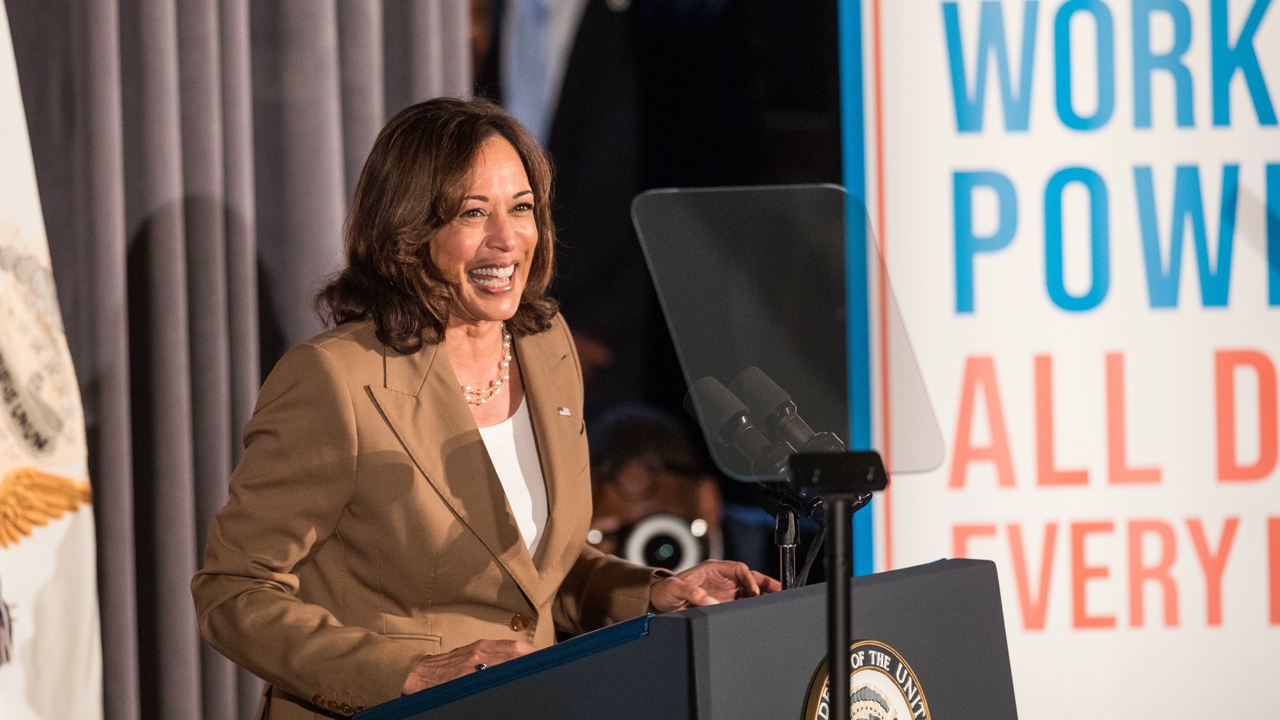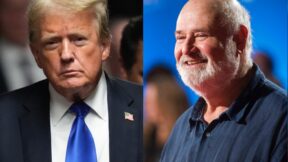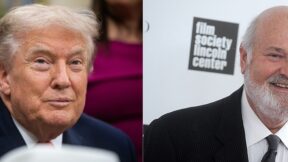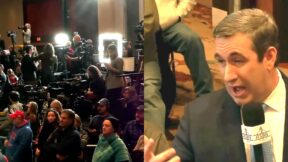White House Debunks NY Post Fact-Check of VP Kamala Harris’s First Time Eating a Grape

Scott Eisen/Getty Images for SEIU
The White House pushed back on New York Post White House correspondent Steven Nelson‘s accusatory fact-check on the first time Vice President Kamala Harris ever at a grape — in her twenties!
That offbeat revelation came during a new exclusive interview with The Nation‘s John Nichols, who wrote:
Growing up in California in the late 1960s and early ’70s, with a mother who was “very deeply rooted” in the movements for economic, social, and racial justice, the vice president was inspired by Cesar Chavez, Delores Huerta, and the United Farm Workers, which used grape boycotts to force growers to negotiate. “The farmworkers movement was very much a part of my childhood,” she recalled. “This sounds quaint, and so I’m reluctant to say it, but, you know, I didn’t eat a grape until I was in my 20s. Like, literally, had never had a grape. I remember the first time I had a grape, I went, ‘Wow! This is quite tasty.’ It was absolutely ingrained so deeply in me: Never cross a picket line.”
Nelson — whose previous hits include “Is Biden going to kill his dog?” and “Did the Saudis give Biden the Covid?” — decided to fact-check the grapest story ever told. In an article entitled “Kamala Harris claims to eat 1st grape in her 20s over labor boycott, but there’s a wrinkle in dates,” Nelson wrote that “Harris’ story is inconsistent with the timeline of the three major grape boycotts spearheaded by the Cesar Chavez-led United Farm Workers.”
Vice President Kamala Harris claimed in an interview for Labor Day that she first tried grapes in her 20s because she would “never cross a picket line” — but a review of dates involved reveals problems with the account.
Eating table grapes was shunned by labor activists from the time Harris was 19 to 36 — meaning Harris would have indeed flouted a picket line if her story is true.
The entire basis for Grape-gate is, as Nelson put it, that “The UFW launched its third and longest California grape boycott in June 1984, just over four months before Harris’ 20th birthday, and it lasted until 2000 when Harris was 36.”
The White House did not “immediately” respond to Nelson for the story, but when contacted by Mediaite, the VP’s office pointed to some relevant details that Nelson left out.
The boycotts to which Vice President Harris was referring took place in the mid-sixties and the seventies in support of striking workers. The boycott to which Nelson refers as Harris’s violation of a “picket line” began in 1984.
Nelson got the dates right, but the last boycott was not in support of striking workers. It focused the boycott on calling for the governor to have stronger enforcement and calling for stopping use of the pesticides, and never gained popular support.
In an article reporting on the end of the boycott in November of 2000, The Associated Press noted “as the latest boycott dragged out, it failed to gain a large following. Consumer studies for the grape industry have found fewer than 5 percent of consumers were aware of the boycott, [President of the California Table Grape Commission Kathleen] Nave said.”
And at that time, the LA Times’ James Rainey wrote “The third boycott initially was promoted in UFW mailers to millions of households, but it never evoked the door-to-door spirit of its predecessors. Over the years, the union devoted progressively less attention to the boycott. Even some activists weren’t sure if the ban on grapes remained in place.”
As such, eating a grape during the third boycott — with little support and no relationship to striking workers — could hardly be considered “flouting a picket line” when such a picket line did not exist.




